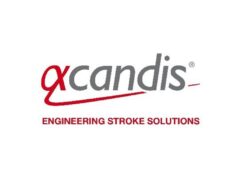
“Overall, we just need better tools” was one of the salient points delivered by Jane Khalife (Cooper University Health Care, Camden, USA) in a talk at the LINNC Americas Seminar (16–17 March, Miami, USA) focusing on stroke cases with rare pathologies.
In her presentation, Khalife highlighted the case of a 75-year-old woman experiencing recurrent falls and right-leg weakness who remained symptomatic following two spinal operations. A magnetic resonance imaging (MRI) scan revealed a small, subacute infarct in the A3 segment of the patient’s left anterior cerebral artery (ACA) and, when her symptoms persisted despite multiple attempts at medical management via drug regimens, Khalife and her colleagues devised three options:
- Continue medical management—effectively, “do nothing”
- Bypass surgery
- Intracranial stenting
Based on the patient’s symptoms and history, they surmised the lesion was due to intracranial atherosclerotic disease (ICAD), and proceeded with a stenting procedure—initially selecting a balloon-mounted, drug-eluting stent, before switching to a sequential angioplasty and self-expanding stent owing to the tortuosity of the vessels.
This second procedural approach was a technical success and ultimately produced positive results, with the patient’s symptoms being largely resolved at a seven-month follow-up appointment, as she returned to her premorbid functional status.
In addition to her point on the need for better intracranial stents, Khalife concluded that the case demonstrated the importance of a multidisciplinary approach to diagnosing and managing patients with rare stroke pathologies. Her other take-home message was that stent selection choices should be made based on lesion aetiology and vessel anatomy.
Following Khalife’s presentation, there was broad agreement among attendees that improvements to current device options in intracranial stenting are required.
LINNC course director Laurent Spelle (Bicêtre Hospital, Paris, France) commented that there are very few stents that can successfully reach locations as distal as the one seen in this case, and it would be “impossible” to track a balloon-mounted stent in such cases as well. He therefore queried why more neurovascular companies are not focusing on these disease types—which are largely absent in Europe but are found more commonly in North America and Asia.
“So, it is a big market, [but] we are still missing the proper tools for this,” he noted.
“I think the companies are all here, and they are all well-represented, so they are hearing us—ICAD is coming back,” added course director Vitor Mendes Pereira (St Michael’s Hospital, Toronto, Canada), before highlighting the fact that, owing to positive case results with intracranial stenting like Khalife’s, “we are creating the same movement that we had with [acute] stroke a few years ago”.
“We are treating, and we are seeing good results, and now we need a good trial with good technology [to confirm this],” Pereira averred.
Here, one LINNC Americas attendee noted that previous ICAD trials constitute a similar story to that of the ARUBA study—a randomised trial that suggested medical management alone was non-inferior to medical management plus interventional therapy in unruptured brain arteriovenous malformations (AVMs), but was widely criticised for its design and methodology. Subsequent observational studies in ARUBA-eligible patients have indicated favourable safety and efficacy can be achieved with appropriate patient selection and improved treatment modality choices in multidisciplinary centres.
“This is a great case and it just shows that, in the right hands, and [through] planning things well, the results of angioplasty and stenting intracranially are really good,” another attendee said. “And, just like we need better catheters, we [do] need better stents, but we have to work with what we have available now and I do think that we have some really good options.”
However, they also concluded that what we “really lack” is better studies to “fight against” old data suggesting ICAD patients do worse with angioplasty and stenting—adding that this is key because, in cases like this where stenting is done “appropriately”, the results are “extremely good”.
Providing some balance to the points made previously, Ricardo Hanel (Baptist Neurological Institute, Jacksonville, USA) drew attention to a recent study from China, involving a “super-selective patient population” treated by experienced, top-level physicians from only the highest-enrolling centres, in which stenting still produced negative results in ICAD patients. On this basis, Hanel stated that the disease is “way more complicated than we evaluate”, and posited that it may not be appropriate to blame failures seen in SAMMPRIS and other previous stenting trials on a lack of operator experience alone.












